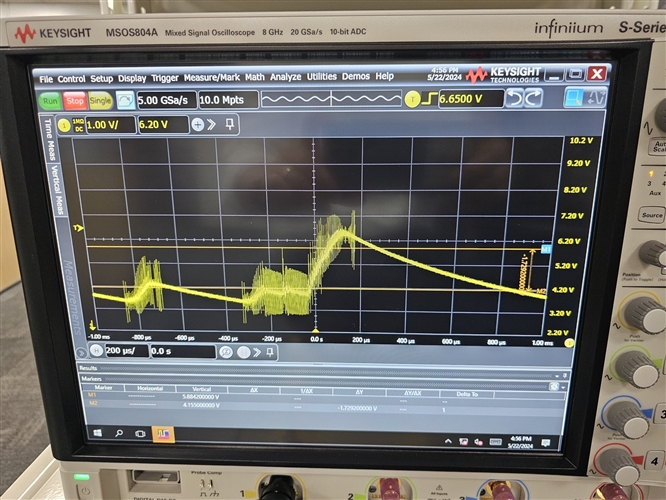Other Parts Discussed in Thread: AM62A7, SK-AM62A-LP, LM25141, CSD18563Q5A
Dear TI experts,
My customer using LM5141 to operate AM62A7.
They designed their schematic based on SK-AM62A-LP EVM schematic.
And they had no problem when they tested 1st sample, but the problem appeared when they tested 2nd sample.
- If they apply the input voltage from 12V to 48V, LM5141 works well.
- but if they apply the input voltage 48V directly, LM5141 died and no output is detected.
- They used power supply for input voltage.
- Finally they want to use 48V input voltage.
- current consumption is 100mA when input voltage is 12V, and 25mA when input voltage is 48V.
So I want you to review their schematic. I attach the 1st sample's schematic(rev.a) and 2nd sample's schematic(rev.B)
The changes from rev.A to rev.B are as below;
- D4 and TNR2 are not inserted.
- rated voltage of D3 is increased. (compared to rev.A)
- 4 PCS of Bead is changed to higher spec. (DC resistance/impedance is down, rated current is up)
- 100uF tantal capacitor has higher rated voltage. (62V to 100V)
- changed location of R58 and C18 (connected to pin 20)
And below image is the waveform when my customer applies 18V input voltage to LM5141 and cut off input voltage.
As you see, the output is not stable. Could you check the reaon and find the way for stable output?

Best regards,
Chase

